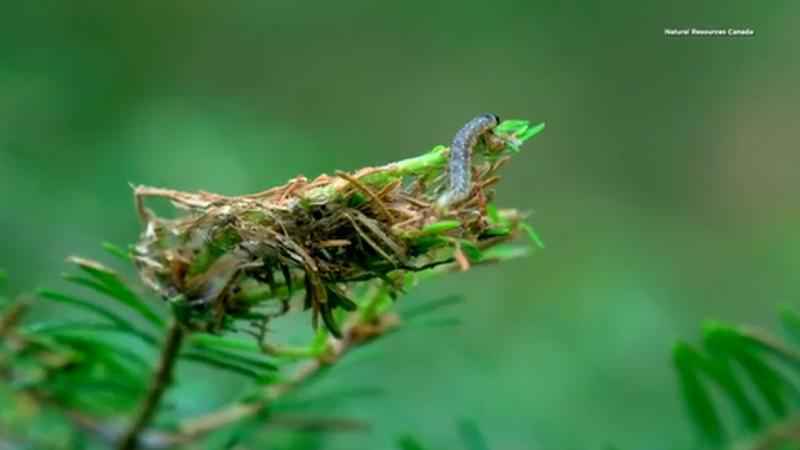How a caterpillar helped fuel Minnesota’s most destructive forest fire in years
[anvplayer video=”5064912″ station=”998122″]
At first, the change was subtle.
John Cron would notice around sunrise and sunset that some of the trees looked off on his 50-acre property north of Two Harbors.
"The way the light would hit the trees, you’d see a lot more browns," he said, saying each year it looked a little worse than it did the year before. "Slowly, you start realizing, well, all these trees are dying," he said.
The dead trees are a result of the spruce budworm, a caterpillar that slowly eats away at the needles of balsam fir and white spruce trees, eventually killing them and leaving behind woody debris that builds up as undergrowth in the forest.

[Natural Resources Canada]
The native pest is being blamed as one of the reasons the Greenwood Fire burned as hot and as fast as it did when it tore through the Superior National Forest this summer.
Forest Ranger Aaron Kania described the conditions this summer as the "perfect storm" — the tree damage from the current spruce budworm outbreak, coupled with extreme drought and high winds increased the fire risk in the forest.
"In an area out here where the balsam fir is impacted by the spruce budworm, it does die back, drops its needles, and increases its susceptibility to fire," Kania said.
The damage
Federal and state officials knew how bad the current outbreak was before the fire started.
The Minnesota Department of Natural Resources tracks the spread of the spruce budworm using site visits to forests and aerial surveys. In 2017, it reported 68,213 acres affected. By 2019, that number had more than doubled to 201,711.
[anvplayer video=”5064896″ station=”998122″]
In its 2019 report, the DNR noted the survey found the heaviest impact from the spruce budworm was "in an area southeast of Ely that is mostly Superior National Forest land," the same land where the Greenwood Fire burned in August.
The fire torched 26,797 acres — or more than 41 square miles — destroyed 15 homes and cabins and leveled more than 50 sheds and outbuildings.
Drone footage offers bird’s-eye view of the aftermath of the Greenwood Fire
But data collected from the U.S. Forest Service shows only 3,272 acres of federal land within the fire’s footprint had been treated or cleared of spruce budworm-specific damage since 2014.
DNR forest health specialist Eric Otto said the state cleared roughly 500 acres of state-owned land due to spruce budworm within the fire’s perimeter in the last five years.
"I would say budworm defoliation and mortality most likely contributed to increasing the risk of fire in the area of where the Greenwood Fire occurred," he said.
Kania also acknowledged the damaged trees contributed to the catastrophic run of the fire. He said the forest service is actively working to manage federal forest land.
"We have timber sales, we have prescribed burns," Kania said. "Having some treatments ahead of time really helps manage fire on a landscape."
The impact on private properties
Home and cabin owners are also aware of the spruce budworm’s impact.
Tim Byrnes is the district forester with the Lake Soil and Water Conservation District. Part of his job is helping private property owners create land management plans.
Byrnes said this summer, he saw an uptick in calls to his office from private landowners who saw the fires and became increasingly concerned with what they saw around their properties.
"You can see that the forest is just choked out with this dead, woody debris," Byrnes said, pointing to a section of trees on a piece of property he was surveying in late September. "It’s been bad for a while."
But as Byrnes visits those properties, he also worries what will happen if other lands are left untouched.
"These fuels can stay in the forest many years, decades after the spruce budworm outbreak ends, so there’s a fire risk long into the future, not just right now at this present moment," he said.
With fire danger on his mind, Cron is working quickly to access grant money that will pay to clear the dead and dying trees on his property. His biggest concern is the fire danger in the future.
"The house is really close to a lot of balsam fir trees that [could] just go up with a match," Cron said.